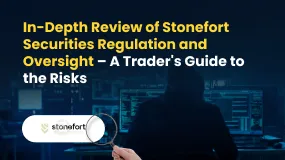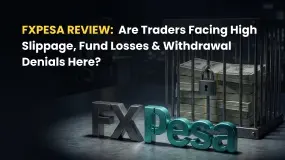简体中文
繁體中文
English
Pусский
日本語
ภาษาไทย
Tiếng Việt
Bahasa Indonesia
Español
हिन्दी
Filippiiniläinen
Français
Deutsch
Português
Türkçe
한국어
العربية
Guide to Trading Styles
Abstract:Trading Forex without a plan is like to driving a car while blindfolded. While you could strike it rich for a while, it will all come crashing down in the end. There are four trading styles that may be used to categorize the various trading methods. The key distinction is the expected duration of the normal trade's existence.
Traders must first choose their preferred trading style, after which they must select or design a trading plan to match it. Traders must also learn to trust and execute their strategy, which requires study, back testing, and forward testing.

What are the four trading styles?
Scalping for ultra-short-term traders (from a few seconds to minutes)
Day Trading for short-term traders (intraday trading)
Swing Trading for short-to-medium traders (from a day or two to a couple of weeks)
Position Trading for long-term traders (from a couple of weeks to months)
What Trading Style Is Best for Beginners?
There is no single optimal trading technique for everyone; instead, each trader must select a method that works best for them. Beginner traders should assess each trading style, pick one they enjoy, and test a trading technique for beginners in that style. It is undeniably true that certain trading techniques are just unprofitable; nevertheless, do not assume that all tactics are equally viable.

Trend trading techniques in major Forex currency pairings such as the EUR/USD and USD/JPY are the only trading strategies that are both lucrative over the long run and feature basic non-discretionary criteria. Many Forex brokers and websites provide trading strategy guidelines based on the use of indicators on short-term price charts for any currency pair or cross. These tactics are ineffective, and anyone who follows them will undoubtedly lose money.
Learning to identify dependable support and resistance levels and then using them to trade depending on what the market is doing on higher time frames may also perform well in Forex discretionary trading techniques.
Returning to the issue of trading styles, finding the ideal style for you will require time, trial and error, and losses along the road, but the rewards will pay off in the long run. You may discover that your trading styles are dictated by your particular circumstances. For example, unless you are ready and able to employ automated trading, you may not have the time to apply a very short-term trading strategy if you have a highly busy schedule.
What makes a trading style different from a trading strategy?
A trader's trading style determines the length of a deal and his or her thinking, and there are four different trading styles. Countless trading methods may be used to express each trading style. They follow the trading style's guidelines but utilize various factors to determine when to enter and exit fresh transactions.
What are the related trading costs with trading strategies?
Each trading style has its own set of expenses, which traders should be aware of before picking which one to adopt.
Here's a rundown of which trading fees are associated with each of the four main trading styles:
Spreads - Scalping
Spreads in Day Trading
Spreads and swap rates on leveraged overnight positions in swing trading
Spreads and swap rates on leveraged overnight positions in position trading
Why is it important for traders to stick to their trading strategy?
Changing your trading approach frequently after a string of losses only serves to exacerbate the problem. This is because the “darkest hour” in financial markets is typically “just before dawn,” thus you'll frequently break and switch to another approach just as your original plan begins to win. This may be incredibly detrimental to your trading mindset.
This is one of the reasons why it's critical to be certain that your trading technique “works” before putting it into action, because your trust will be put to the test at some time. If you've backtested a trading method, you'll know how terrible its worst losing streaks are, so you'll be able to tell if a string of losses is normal or an indicator that something is fundamentally wrong with your approach.

How many different trading styles and strategies are there?
There are four different trading styles, each with its own set of benefits and drawbacks. Traders should think about them thoroughly before choosing one that best matches their personality and living circumstances. If you're not sure, you can always use a demo account to test them all out.
Scalping is a great way for algorithmic traders to make money:
Scalping is a type of trading in which traders conduct high-volume, short-duration trades and hold positions for only a few seconds or minutes. Instead of benefitting from the trend, they grab a few pips and may even trade the same asset long and short in the same trading session.
Day trading is ideal for short-term leveraged traders:
Day trading is a low-cost strategy for leveraged traders since holdings are seldom held overnight. Multiple transactions in the same asset to capture short-term price swings are common when trading volume is moderate and time periods are short. Day trading can be done manually or automatically.
Swing Trading is a well-balanced strategy for medium-term investors.
Swing trading is suitable for traders who want to trade in the direction of a well-known trend. They love volatile assets and frequently purchase on falls or sell on rises. Trading fees, especially if leveraged positions are held for several weeks, may be a considerable drain on earnings.
Position trading is a strategy for long-term traders who aren't using leverage.
Position trading is similar to buy-and-hold investment, except that traders will go long as well as short. Position trading necessitates patience in order to wait for profits to accrue, as positions can be open for weeks or even months at a time, making it best suited to unleveraged or low leveraged trading. Position traders minimize volatility and prefer established patterns on lengthy time frames in this low-frequency trading approach.
There are several trading styles to choose from. The trading technique that best matches your personality, availability, and ability is the one you should choose. After a losing streak, novice traders frequently switch trading styles, which is a crucial mistake. No trading strategy will guarantee profits on every transaction, but switching tactics repeatedly will almost certainly increase trading losses. Learning to trust a trading style and approach takes time and active trading experience, but the long-term payoff is substantial, so perseverance is essential. However, you will be unable to endure under duress if you do not have confidence in both your trading style and plan. As a result, it's critical to start with a trial account and then go to a tiny live account before increasing your risk level.
Disclaimer:
The views in this article only represent the author's personal views, and do not constitute investment advice on this platform. This platform does not guarantee the accuracy, completeness and timeliness of the information in the article, and will not be liable for any loss caused by the use of or reliance on the information in the article.
Read more

MH Markets Deposits and Withdrawals Overview: A Data-Driven Analysis for Traders
For any experienced trader, the integrity of a broker is not just measured by its spreads or platform stability, but by the efficiency and reliability of its financial plumbing. The ability to deposit and, more importantly, withdraw capital without friction is a cornerstone of trust. This review provides an in-depth, data-driven analysis of the MH Markets deposits and withdrawals overview, examining the entire fund management lifecycle—from funding methods and processing speeds to fees and potential obstacles. MH Markets, operating for 5-10 years under the name Mohicans Markets (Ltd), has established a global footprint. With a WikiFX score of 7.08/10, it positions itself as a multi-asset broker offering a range of account types and access to the popular MetaTrader platforms. However, for a discerning trader, the real test lies in the details of its payment systems and the security of their funds. This article dissects the MH Markets funding methods withdrawal experience, leveraging pr

In-Depth Uniglobe Markets Commission Fees and Spreads Analysis – What Traders Should Really Know
For experienced traders, the cost of execution is a critical factor in broker selection. Low spreads, fair commissions, and transparent pricing can be the difference between a profitable and a losing strategy over the long term. This has led many to scrutinize the offerings of brokers like Uniglobe Markets, which presents a tiered account structure promising competitive conditions. However, a professional evaluation demands more than a surface-level look at marketing claims. It requires a deep, data-driven analysis of the real trading costs, set against the backdrop of the broker's operational integrity and safety. This comprehensive Uniglobe Markets commission fees and spreads analysis will deconstruct the broker's pricing model, examining its account types, typical spreads, commission policies, and potential ancillary costs. Using data primarily sourced from the global broker inquiry platform WikiFX, we will provide a clear-eyed view of the Uniglobe Markets spreads commissions prici

In-Depth Review of Stonefort Securities Regulation and Oversight – A Trader's Guide to the Risks
For experienced traders, the process of selecting a new broker transcends a simple comparison of spreads and leverage. It is a meticulous due diligence exercise where the integrity of the broker's regulatory framework is paramount. Stonefort Securities, a relatively new entrant in the crowded brokerage space, presents a complex and often contradictory profile. On one hand, it boasts a modern MT5 platform and a stream of positive user testimonials. On the other hand, it is shadowed by severe regulatory warnings that question the very foundation of its operations. This in-depth review focuses on the core issue for any long-term trader: Stonefort Securities regulation and oversight. We will dissect the broker's corporate structure, scrutinize its licensing claims, and analyze what the data implies for trader protection and fund security. For traders evaluating whether Stonefort Securities is a trustworthy partner, understanding these details is not just important—it is essential.

FXPesa Review: Are Traders Facing High Slippage, Fund Losses & Withdrawal Denials?
Do FXPesa support officials fail to pick up your calls when you raise fund withdrawal requests with the broker? But are these officials always open to you regarding fund deposits? Do you frequently spot slippage and stop-loss order execution errors on the FXPesa login? These issues are increasingly becoming common with this forex broker. Consequently, many traders have expressed their dissatisfaction with the broker online. In this FXPesa Review article, we have shared some of these complaints. Take a look!
WikiFX Broker
Latest News
The 350 Per Cent Promise That Cost Her RM604,000
In-Depth Uniglobe Markets Commission Fees and Spreads Analysis – What Traders Should Really Know
WikiFX's New Evaluation of ATM Capital LTD: Does its License Protect the Arab Investor?
Is Axi Legit? A Data-Driven Analysis of Its Regulatory Standing and Trader Feedback
How a Fake Moomoo Ad Led to the “New Dream Voyage 5” Scam
FXPesa Review: Are Traders Facing High Slippage, Fund Losses & Withdrawal Denials?
Trive Investigation: High Score, Hidden Risk - The Profit Paradox
CMC Markets Australia Revenue Surges 34%, But High-Net-Worth Clients Face Tax Phishing Threat
"Just 9 More Lots": Inside the Endless Withdrawal Loop at Grand Capital
GCash Rolls Out Virtual US Account to Cut Forex Fees for Filipinos
Currency Calculator



